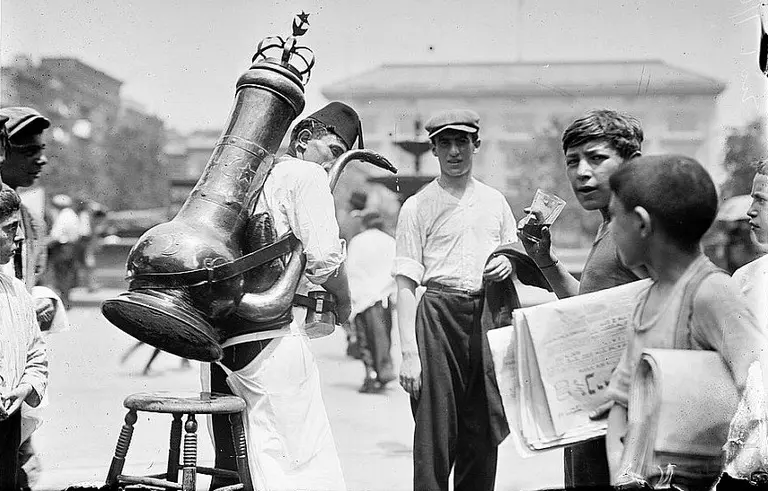
A man wearing a fez selling drinks in Little Syria in the early 1900s (Bain News Service, 1916), via Wiki Commons/Library of Congress
GIVEAWAY: Win a pair of tickets to MAS’ walking tour of the lost ‘Lower West Side’
Enter to win a pair of tickets!

A man wearing a fez selling drinks in Little Syria in the early 1900s (Bain News Service, 1916), via Wiki Commons/Library of Congress

A man wearing a fez selling drinks in Little Syria in the early 1900s, via Wiki Commons